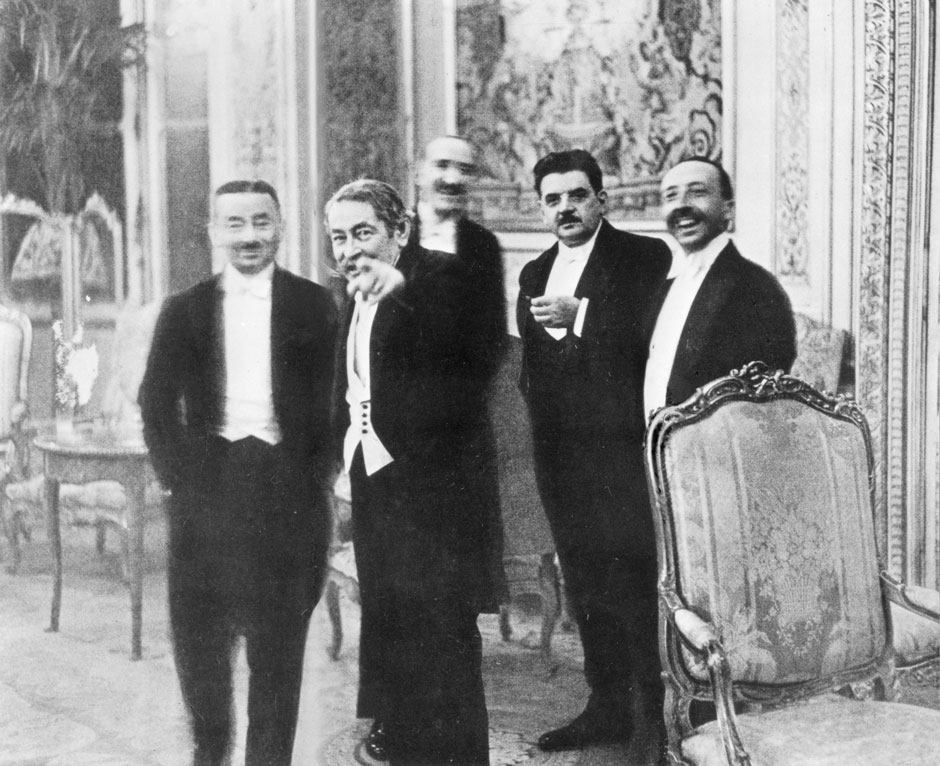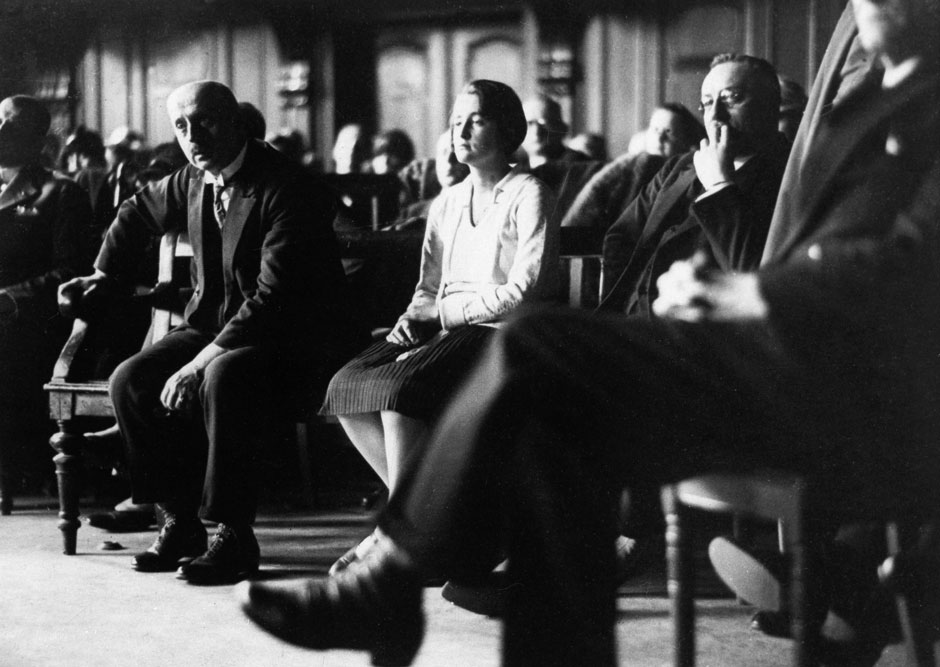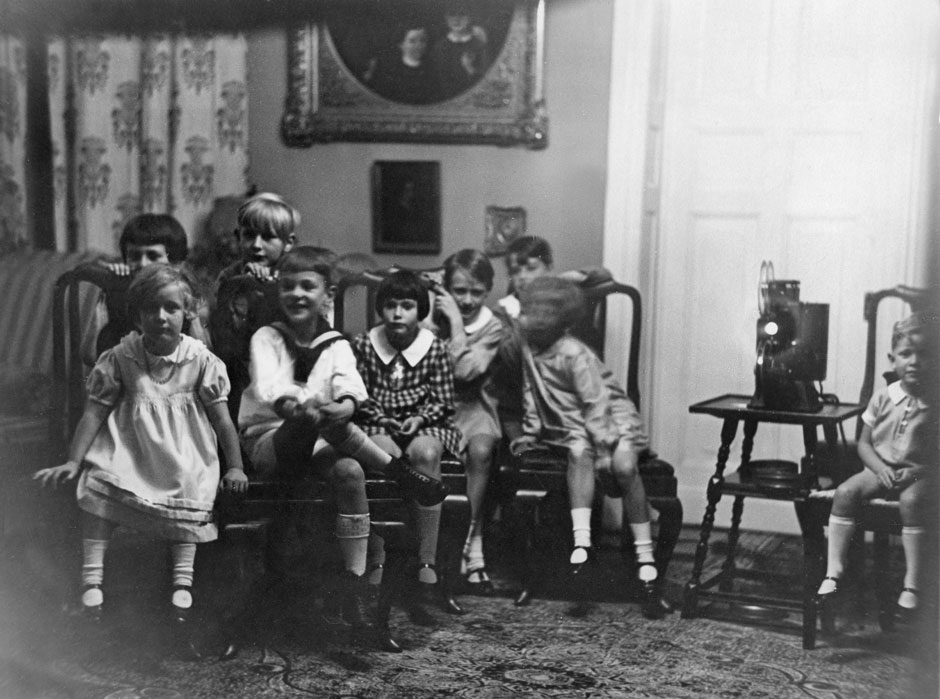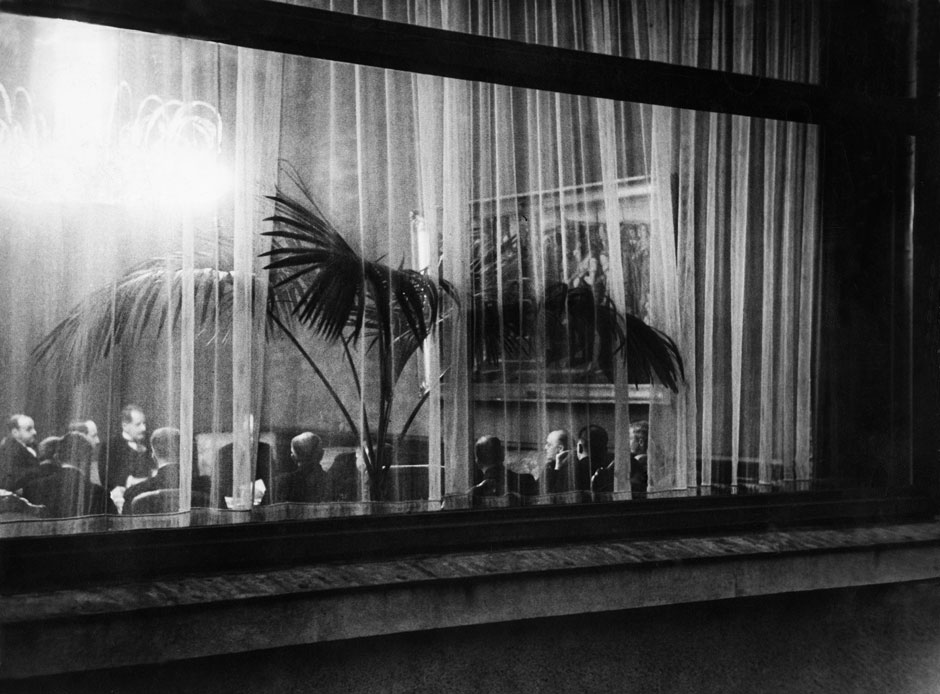My father turns ninety this fall, on Halloween, and we will celebrate accordingly. The American Chemical Society, in a special symposium, will honor him in turn for his contributions to the history of organic chemistry, his work on science in early Japan and China, and his innovative spiral-shaped periodic table. Meanwhile, photographs of another birthday party, which my father attended when he was four years old, have recently been brought to our attention. They were taken in 1929, by the Berlin photographer and photojournalist Erich Salomon (1886-1944), at his home at number 11 Hölderlinstrasse, in Berlin. My father, according to his birth certificate, lived next door at number 10.
The photographs of my father, along with other children at the party—including Salomon’s younger son, Dirk, the shyly smiling birthday boy—were first shown in public two years later at yet another birthday celebration, Salomon’s forty-fifth, held at the posh Hotel Kaiserhof in 1931, when Salomon was at the height of his fame. There, before an audience of four hundred distinguished Berliners, Salomon presented a slideshow that began with his celebrated portraits of “famous contemporaries in unguarded moments” (Berühmte Zeitgenossen in unbewachten Augenblicken, the title of his 1931 book of photographs of world leaders, movie stars, and other celebrities), including shots of many people in the audience. The slideshow ended with images of children, one of whom is identified, in Salomon’s lecture notes, as “Teddy Benfey.”
It was on the basis of this puzzling note that a Berlin-based art historian named Christiane Kuhlmann, who is researching Salomon’s professional and personal networks, contacted me, asking if I might happen to know the identity of this Teddy Benfey. The Salomons and the Benfeys were neighbors, my father explained to her, but there were other links between the two families. Salomon was trained in zoology and engineering before getting a doctorate in law in 1913. Captured at the first Battle of the Marne, he spent four years in prisoner-of-war camps, where he perfected his French. He was first employed as a photographer by the Ullstein firm, the biggest publisher in Europe between the wars. My father’s maternal grandmother was Toni Ullstein, whose brothers ran the firm; his mother’s sister was the textile artist Anni Albers. My grandfather, Eduard Benfey, another World War I veteran, was Chief Justice of the Supreme Court for Financial Affairs (a separate court adjudicated criminal trials); Salomon, a lawyer by training, had a special interest in infiltrating courtrooms.
One of the founding figures of photojournalism, Salomon pioneered the use of hidden cameras—the phrase “candid camera” was first applied to him. A 1924 Ermanox equipped with glass plates and a relatively fast shutter speed, concealed in bowler hats and briefcases—and, in one memorable occasion, in bagpipes—allowed him to take photographs in places where they were strictly prohibited: in the casinos at Monte Carlo or at criminal trials. With a camera hidden in a sling, Salomon was the first photographer to take pictures of the United States Supreme Court in session.
Salomon was best known for his photographs of diplomatic gatherings at the highest level. Employing various subterfuges, he followed three statesmen across Europe—Aristide Briand, Joseph Chamberlain, and Gustav Stresemann—as they fecklessly tried, over champagne and cigars, to preserve peace in Europe. When he couldn’t gain admission to the inner sanctum, Salomon photographed the hat-check man asleep under the ministers’ hats, or members of the diplomatic entourage. One particularly brilliant photograph, rife with irony, shows Maurice Privat, Pierre Laval’s astrologer, perched on a sofa under Rubens’ painting The Conclusion of Peace, consulting a star chart as he waits for his daily session with the prime minister. The most famous of Salomon’s cat-and-mouse photographs records the moment when Briand, who dubbed him “the king of the indiscreet,” recognizes him across the room and points a friendly accusatory finger at him, just as Salomon snaps the image.
Such reaction shots were a specialty for Salomon, who was always as curious about the spectators—who shared the perspective of the photographer—as he was about the spectacle. In one of his photographs from the 1929 birthday party, eight children are seated to the left of a movie projector and intently watching (as another photograph makes clear) a cartoon of Felix the Cat. To the right of the projector, sitting all alone, is my father, in white knee socks and patent-leather shoes.
It is easy to imagine Salomon commenting on this photograph to the festive audience at the Kaiserhof. “Doesn’t little Teddy Benfey look like the proud filmmaker himself, showing off his work to the adoring audience? And notice how I have deployed the other children against a contrasting darker background, underneath a painted portrait of yet two more children. Look how attentive all of these children are. That’s how I want people to look at my photographs.”
Advertisement
The depression year of 1929, when these photographs were taken, was disastrous for Germany, tipping an already fragile economy toward apocalypse. By the time Salomon returned from a second visit to the United States, where he photographed spectators at the Harvard-Yale game and William Randolph Hearst playing solitaire in his refuge at San Simeon, Adolf Hitler had taken up residence in the Kaiserhof.
When photographers of Jewish descent were banned from publishing their work, and Hitler seized the Ullstein firm as a manifestation of the “Jewish press,” even Salomon’s strategies of concealment were useless. He worked in England, where he tried in vain to slip into Buckingham Palace and took a brilliant night shot of the exterior of Windsor Castle, before moving in with his in-laws in Holland, where he found a new subject in musical performers such as Pablo Casals. Salomon was particularly fascinated with orchestra conductors. He would have an extra music stand surreptitiously placed among the woodwinds, where he would take his place, in black tie and tails, with his own soundless instrument poised at the ready, as Toscanini or Furtwängler or Bruno Walter raised his baton.
Salomon was well aware of the dangers of remaining in the Netherlands. His old Ullstein editor, Kurt Safranski, invited him to work for Life in New York. His older son and future biographer, Peter Hunter (who, to protect his family in case of capture, dropped his given name, Otto Salomon, when he joined the British Army), urged him to join him in London, where my own father (another Otto, the Bismarck legacy) also survived the war.
My grandfather—Salomon’s former neighbor on Hölderlinstrasse—was fired by the Nazis in 1935. (“You are not Chief Justice Benfey,” he was told by a Nazi official. “You are Jew Benfey.”) The following year, my father was sent, for his own protection, to live with family friends in England, where he became a graduate student in chemistry at the University of London, on an accelerated track to support the war effort. He got his Ph.D. in 1946, when he was barely twenty. Later that year, he was reunited with his parents, whom he hadn’t seen in six years, in the United States.
Salomon was not so lucky. Having methodically rebuilt his career in Holland, he postponed his departure until it was too late. With his wife and younger son, Dirk, the photographer went into hiding; the master of subterfuge was betrayed to the German authorities in the most banal way, by a gas-meter reader suspicious of consumption in a supposedly empty house. They were deported, first to Theresienstadt and then to Auschwitz. According to Red Cross records, all three were murdered in the gas chambers in July 1944, a month after the Allied landing at Normandy. Dirk Salomon, whose birthday party my father attended in 1929, was twenty-four.
Erich Salomon’s place in the history of photography is secure. His emphasis on the “unguarded moment” was further developed by Cartier-Bresson and Eisenstadt; Walker Evans took a concealed camera onto New York subway cars a decade after Salomon inaugurated the practice. John Szarkowski, who assembled so much of the photography collection at the Museum of Modern Art, wrote of the “endless fascination” of Salomon’s work, singling out for praise, in Looking at Photographs, an image shot through a curtained window of French statesmen meeting in Berlin in 1931, a picture that “allows us to believe that if we were inside the room we could understand everything.” Szarkowski’s protégée Diane Arbus particularly admired Salomon. Helmut Newton, born in Berlin in 1920 (on Halloween, like my father) and another exile from Nazi Germany, was inspired by Salomon’s work to become a photographer.
But for me, as my father turns ninety and I myself slide farther past sixty, the unguarded moments at the 1929 birthday party—Teddy Benfey, sucking hard on a straw, or turning his little head up to look at the photographer, with the flags of the soon-to-be-unrecognizable world hung on a string down the table—have a different, more private meaning, moments that recall the poet Rilke contemplating a photograph of his own father in his youth: “You swiftly fading daguerreotype/ In my more slowly fading hands.”
Advertisement





